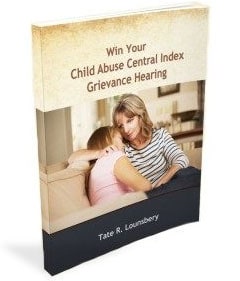Signs of Child Abuse Doctors Look For
As mandated reporters, doctors are required by law to report suspected instances of child abuse. Of course, these are serious charges, and physicians should tread carefully to make sure circumstances and presenting injuries warrant allegations of child abuse. Through understanding patterns of accidental and intentional injuries, doctors are more likely to flag cases of potential child abuse.
Below, we will review information found in the following article: S. Maguire. Which injuries may indicate child abuse?. Arch Dis Child Educ Pract Ed 2010;95: 170-177.
Note that doctors are taught that accidental injuries are not child abuse, but that non-accidental or intentional injuries are child abuse. While from a legal standpoint, that is totally inaccurate, from a doctor’s perspective, they must report anything that could potentially be child abuse, so they use a broader definition of child abuse than will be used in your Child Abuse Central Index grievance hearing. Nonetheless, for purposes of this article, we will adopt the language used by the medical profession.
What is Child Abuse, and How Do Doctors Determine It?According to the American Medical Association Journal of Ethics article referenced here, abuse is any non-accidental injury to a child. Physical abuse may involve, by way of example, hitting, biting, burning, shaking, or strangling. Evidence of physical abuse may come from bruises, broken bones, burns, bites, internal injuries, etc.
Although children are notoriously accident-prone, injuries resulting from accidents occur in typical patterns. When physicians encounter an atypical pattern of trauma that cannot be explained logically, they are duty-bound to report their suspicions. Doctors are not responsible for “proving” child abuse—that is up to child welfare services social workers, law enforcement officers and prosecutors—but they are responsible for raising the alarm.
Children Most at Risk for Physical AbuseYoung children, especially those who are three years old or younger, are most likely to be physically abused, although physical abuse can happen through the teen years. Boys and girls are equally likely to be abused.
The highest incidence of abuse occurs in children who are less than 12 months old. The literature reports that children who are disabled, have relatively low socioeconomic standing, or are immigrants are more likely to be abused. However, it is unclear whether or not these effects are due to increased scrutiny among these groups.
Bruising—The Most Common Abuse InjuryChildren, especially those who are just attaining mobility, routinely sustain bruises from simple accidents. However, physicians are alert to signs which indicate bruises were intentionally inflicted.
Children frequently bruise the back of their heads or their rear ends. Not surprisingly, knees and shins are also the sites of accidental bruising. A physician must carefully examine bruises on the face and head, though, as well as other parts of the body, as bruises in these areas are far less likely to be accidental. Bruising of the neck and head is the most commonly recorded abusive (i.e., non-accidentally-self-inflicted) injury.
Accidental bruising on the face occurs in a T-shaped pattern encompassing the forehead, nose, upper lid, and chin. Bruises on the cheeks or around the eyes are more likely to be caused by abuse. Of course, children do occasionally suffer black eyes, but the presence of two black eyes should raise a red flag for a conscientious physician.
Bite MarksDoctors should be especially alert to the presence of potentially abusive bite marks in children, since these injuries can at times be definitively tied to a perpetrator. Any adult bite on a child that’s forceful enough to leave a mark is considered abusive.
FracturesAlmost 40% of children break a bone by their 15th birthday. These fractures are often related to motor vehicle accidents, playground or athletic activities, or falls, and they often involve an upper limb.
The age of the child is a key factor in suspected child abuse related to fractures, with 80% of abusive fractures occurring in children less than 18 months old. An estimated one-third of abused children have hidden or overt fractures. Multiple fractures point to abuse. When presented with a fracture due to a purported fall, doctors ask pointed questions to determine whether the injuries are consistent with the history given.
BurnsBurns are another common childhood injury. Boys are two times more likely to be burned than girls. These figures double again for 10-14-year-old children.
The most common type of burn injury in young children is the “pull-over” scald, where children spill containers of hot liquid on themselves. The classic pull-over scald pattern is an asymmetric collection of burns to the arm, face, portions of the upper torso, and neck.
In contrast to accidental burns, abusive burns are often symmetrical. The most common abusive burns are hot water immersion scalds to the lower limbs or buttocks. Another common abusive pattern is the “glove and stocking” pattern in which only a child’s hands and feet are burned. Attentive physicians should report burns that are symmetrical and are not logically consistent with the story given.
ConclusionWhen doctors assess children, particularly those three years old or less, they make careful notes of the injuries they find and report any that deviate from widely recognized patterns of accidental injuries.
 Lounsbery Law Office, PC Home
Lounsbery Law Office, PC Home
